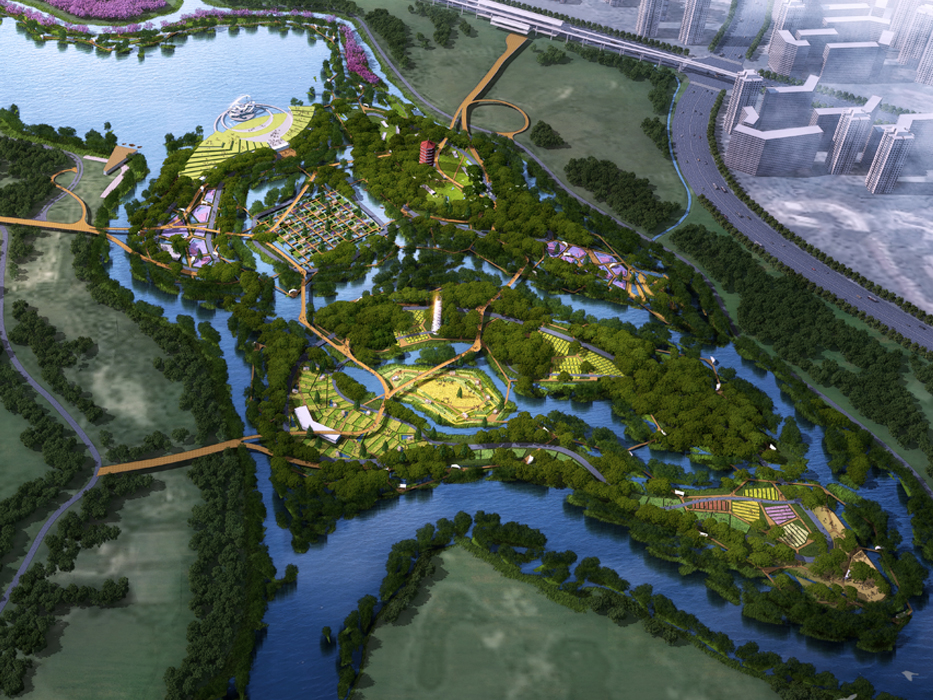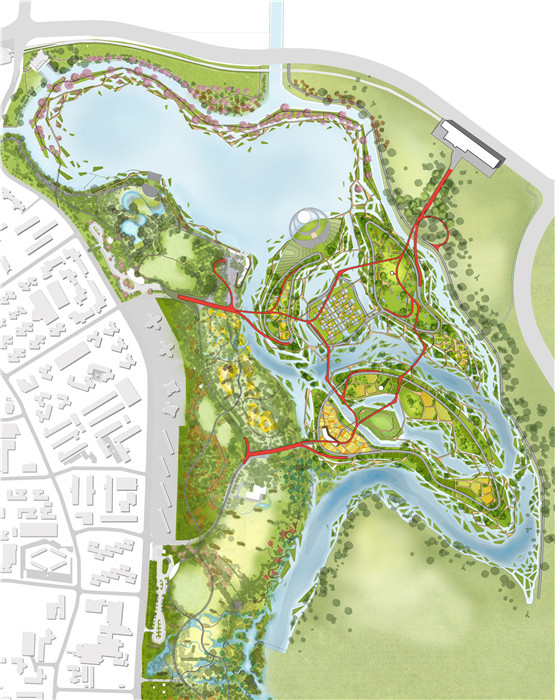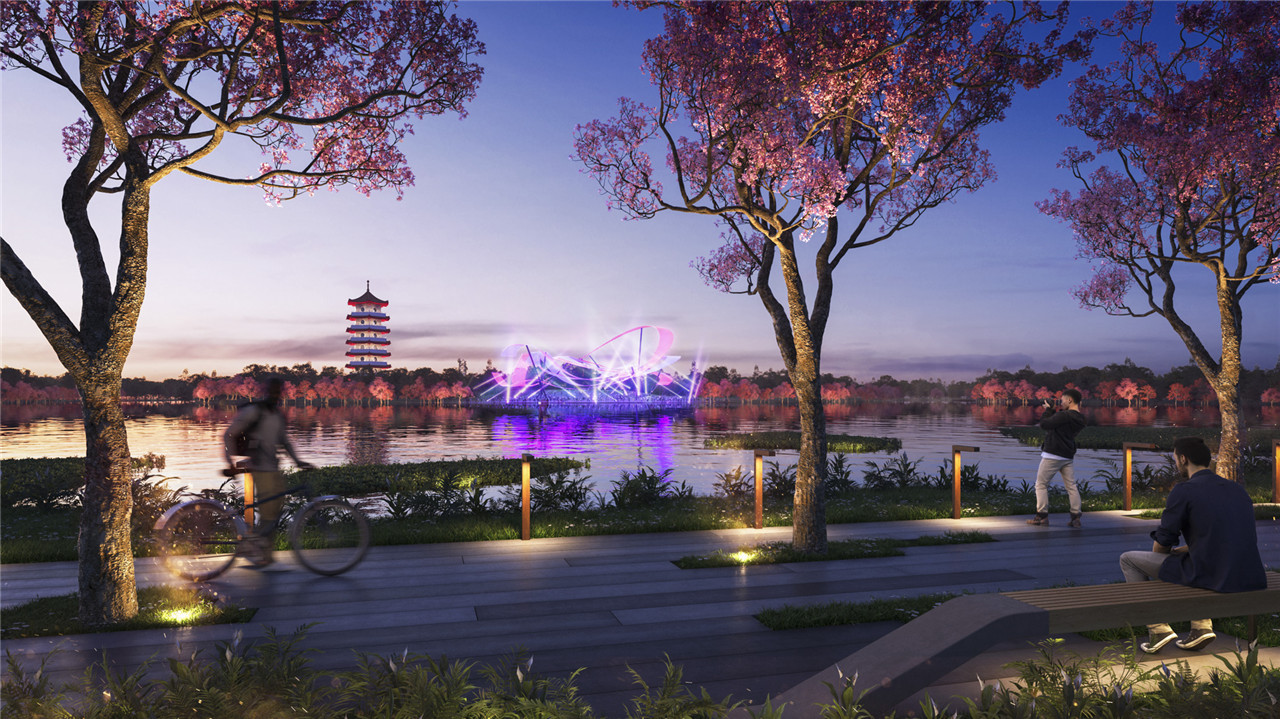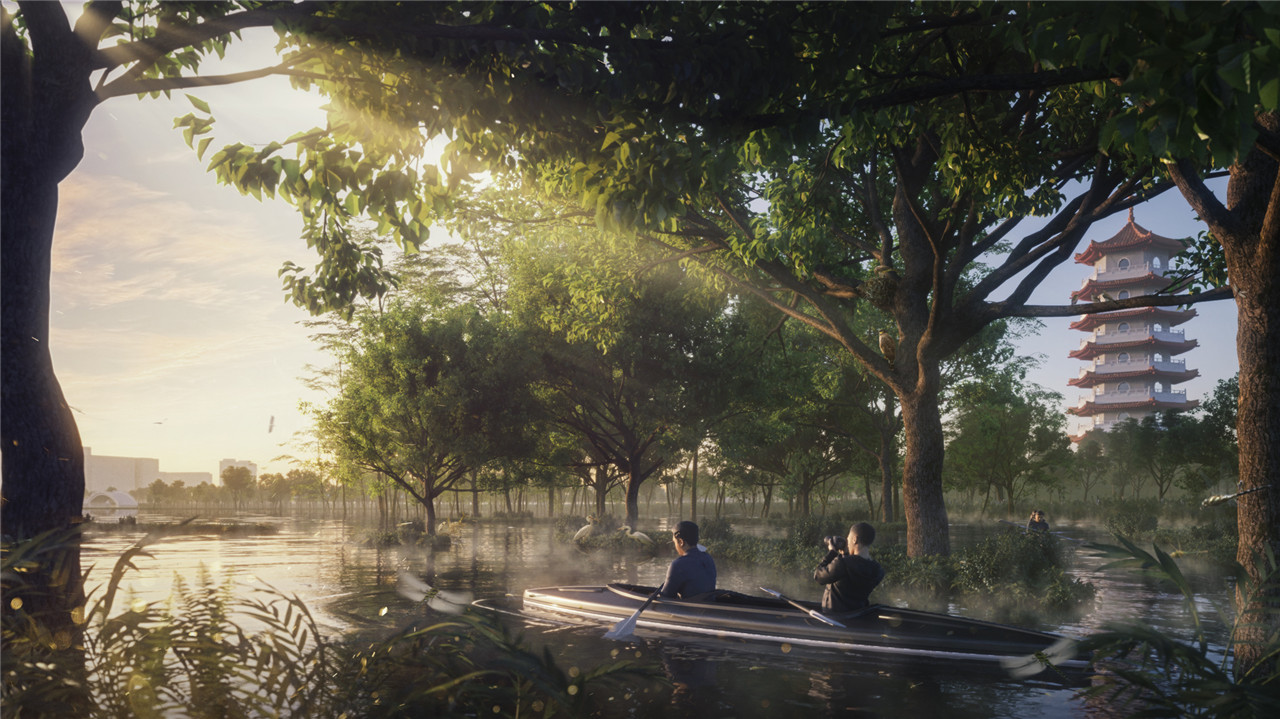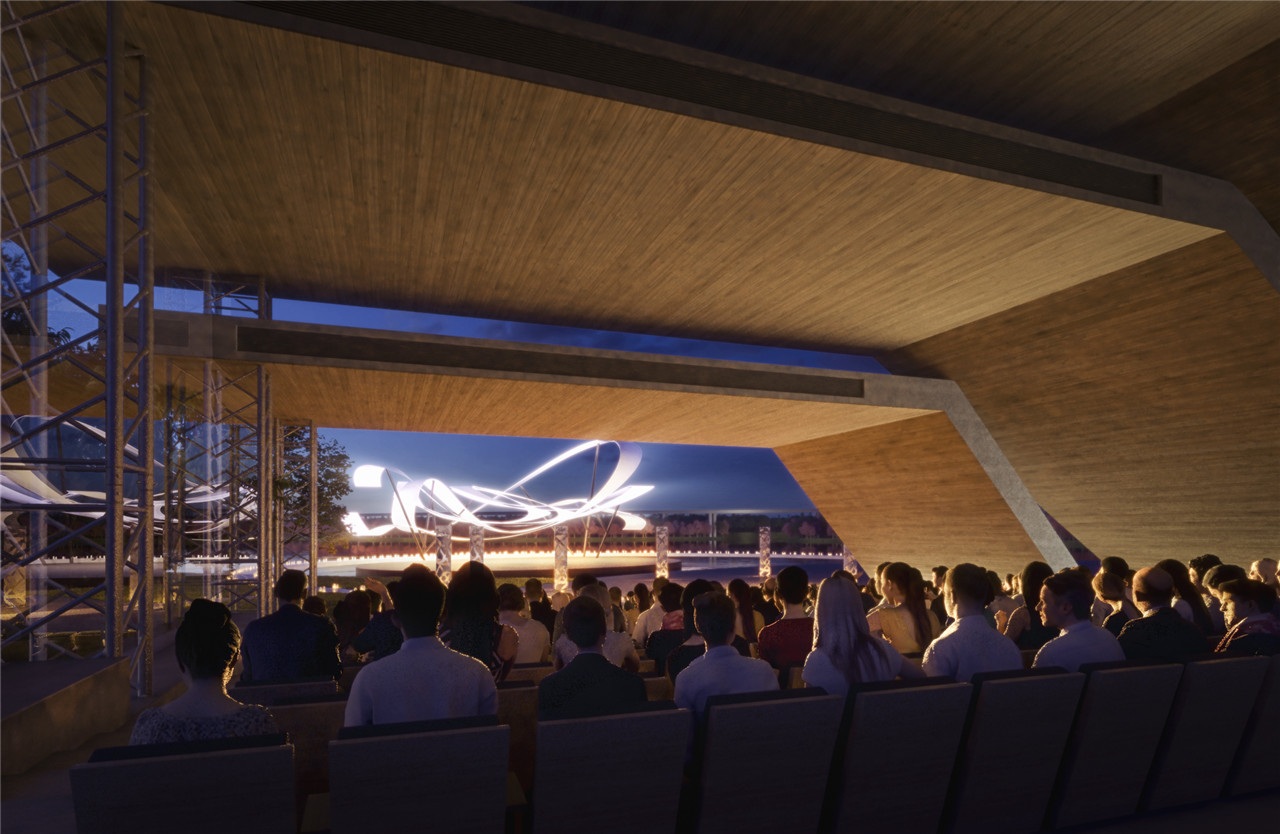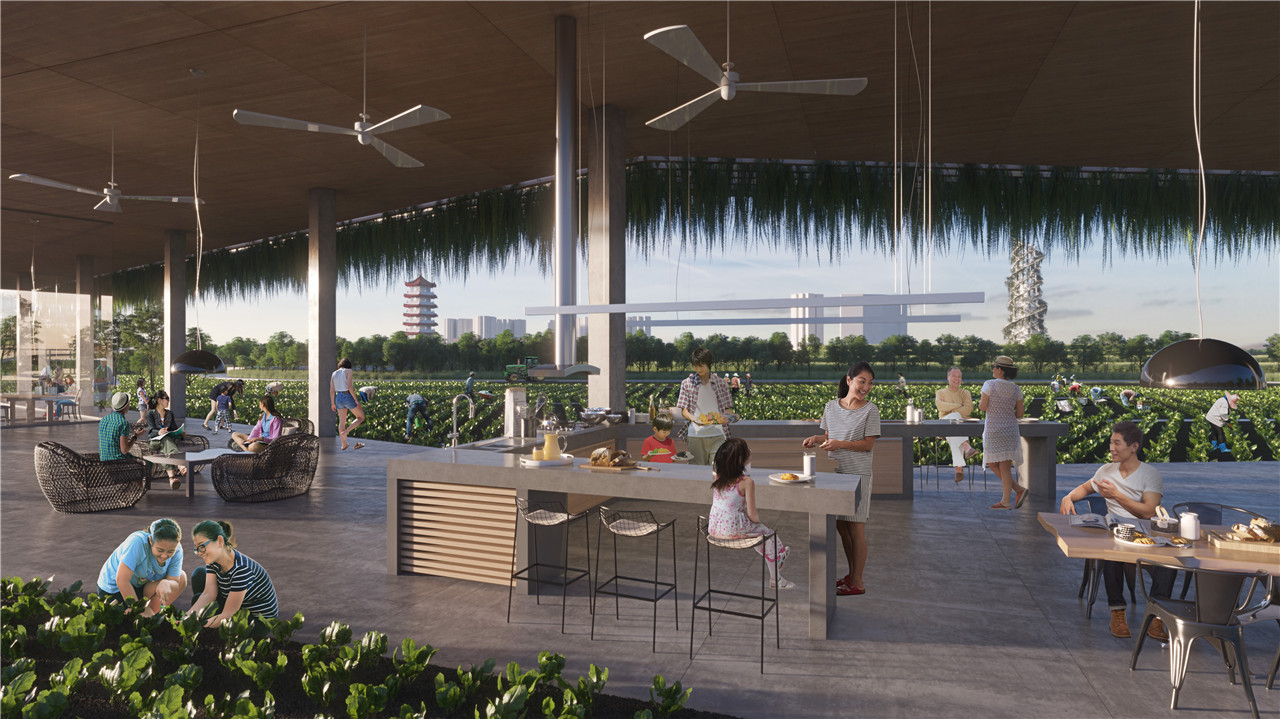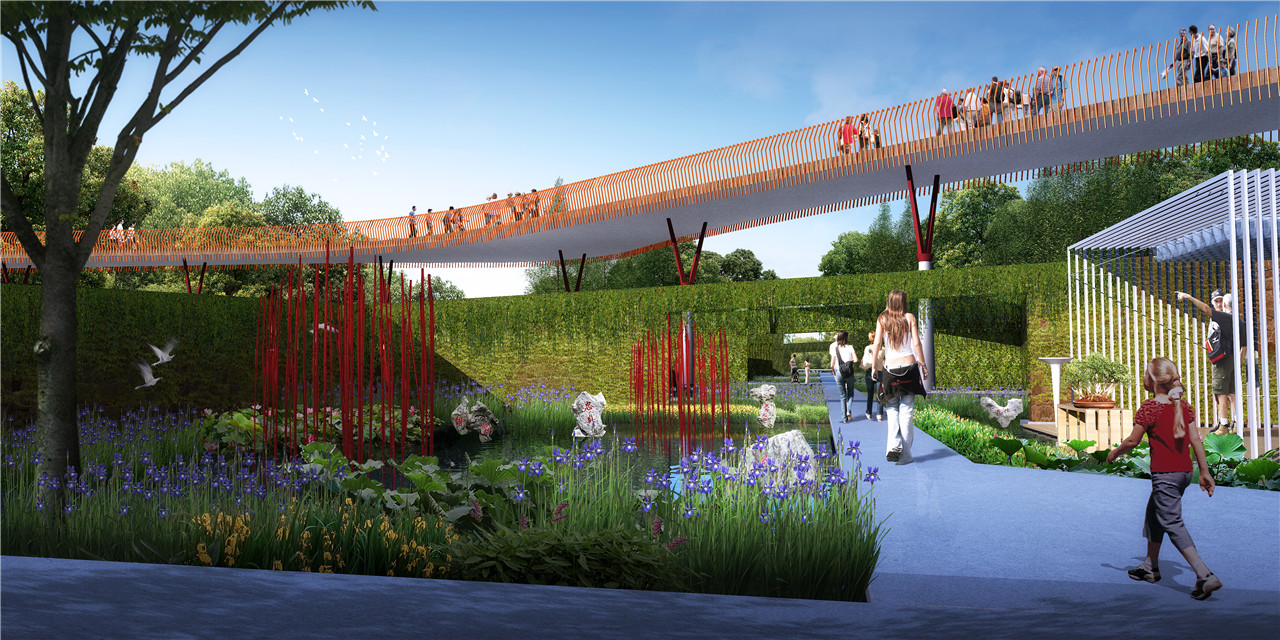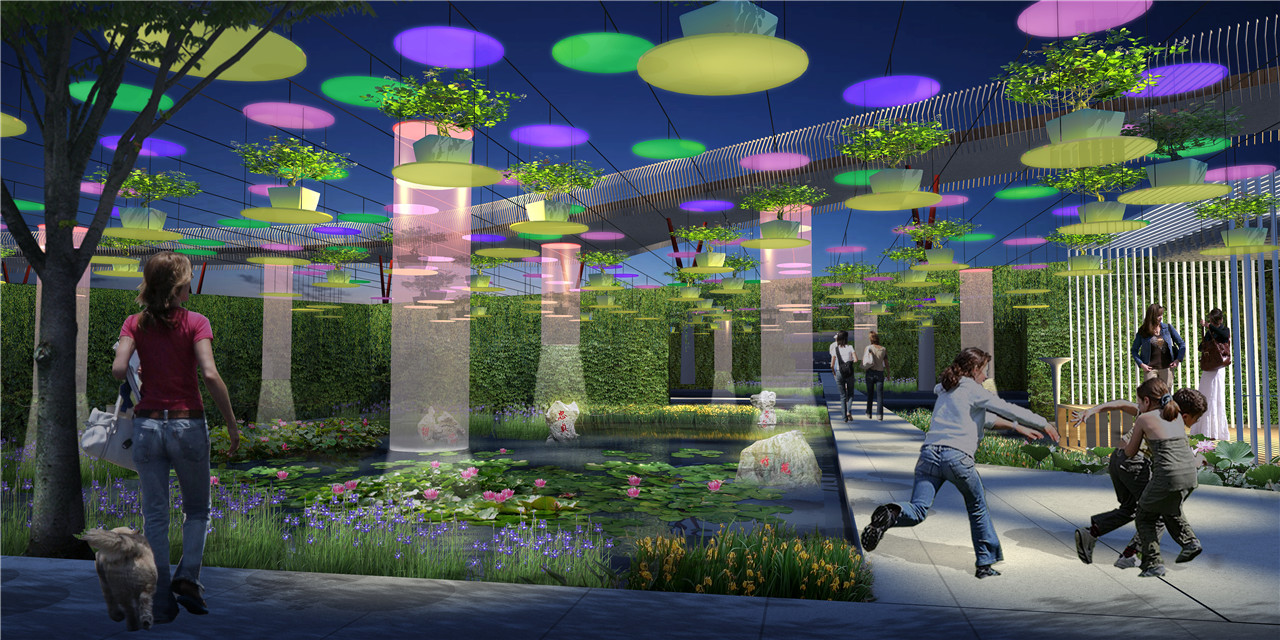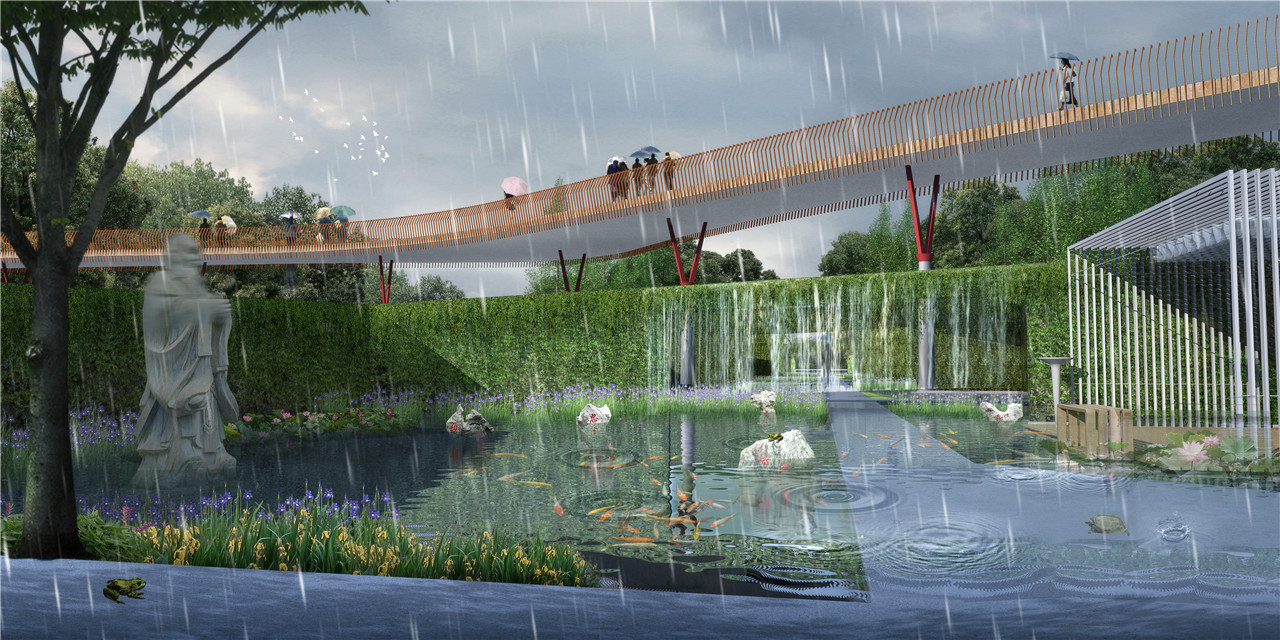Singapore Jurong Lake Park
Project Information
- Project Location:
- Singapore Jurong
- Project Scale:
- 37 Hectares
- Design Time:
- April 2016
- Client:
- Urban Redevelopment Authority of Singapore
Project Profile
1. Project Statement
Jurong Lake Park is closely intertwined with the historical development of Singapore. The Jurong Lake area has evolved from its original swampy state in the 1960s (with no human traces), through land expansion and the establishment of numerous factories in the 1970s, to the rapid development of real estate and the emergence of extensive amenities in the 1990s. This entire development process underscores the significant impact of human activities on environmental change. The site has witnessed changes in human-environment relationships over the past 50 years of Singapore's rapid modernization, symbolizing the transition from agricultural to industrial civilization.
Fifty years later, the Jurong Lake area will transform into a major regional center. Intensive parks will drive Singapore's next phase of transformative development, with Jurong Lake Park becoming the central area of Singapore's national parks.
For us, Jurong Lake Park is more than just a simple landscape planning project. We envision Jurong Lake Park as a unique, memorable, and extensively user-friendly park. Its intricately woven connections will integrate effectively with communities and cities, deeply rooted in both site and culture. Our design aims to strategically coordinate the relationships between site, city, architecture, and landscape through a comprehensive and creative approach to infrastructure.
2. Objective and Challenge
(1) Water — Jurong Lake and islands;
(2) Heritage — existing bridges, towers, etc.;
(3) Wildlife — egrets, kingfishers, etc.;
(4) Community Connectivity — utilization by surrounding communities;
(5) New Park Gateways — the new Singapore Science Center site within the park.
3. Design Strategy
(1) Integration — symbiotic landscape ecosystem
Green Connectivity Plan: The overall planning of Jurong Lake Park will focus on water management, ecological continuity, green transportation, etc., ensuring seamless integration with national landscape ecology and urban network systems. These proactive systemic interventions are crucial to achieving the project's long-term vision and design goals.
From non-productive landscape to productive landscape: Originally built in the 1970s, Jurong Lake Park was a traditional, independent ornamental garden. We envision the new Jurong Lake Park establishing new connections with the land, creating a complete landscape ecosystem with natural cycles that can self-sustain and coexist with humans. It will transition from a high-maintenance, low-output, managed park to a low-maintenance, high-output productive park, reflecting a new model of symbiosis between the park and nature.
(2) Innovation — intelligent, sustainable educational park
Integration of Science and Nature: The future Jurong Lake area will lead new models of urban mixed use, including sustainability, intelligence, and connectivity. Similarly, we believe that Jurong Lake Park has tremendous potential to become an intelligent, sustainable new park, especially in areas such as habitat protection and biodiversity, stormwater management, carbon cycling, etc. The park can utilize smart technology to encourage new ways of exploring, observing, and appreciating nature through learning, such as the park's water management processes. Biodiversity conservation can be part of community education, visible and readable (e.g., through smartphone technology), thereby enhancing public awareness and responsibility for environmental protection. The new Science Center will further enhance the concept of integrating science and nature in the park, creating a unique outdoor classroom and living laboratory. At the same time, water resources can be used to promote community gardens, production and processing of food ingredients and other activities.
(3) Interaction — creating a positive social living environment
The new Jurong Lake Park will plan a series of entertainment activities and festivals to attract a wide range of citizens. The new Jurong Lake Park is not only a green park for experiencing and enjoying nature but also a unique cultural memory that establishes unique cultural memories between art, food, and nature.
4. Specific Strategy
(1) Strategy for reusing heritage elements
Main Tower: As a distinctive entrance sign of the park, the main tower connects with the aerial walkway. Visitors can reach the main tower via the aerial walkway, and a series of small interpretive sites are set around the main tower to systematically interpret the historical context of the Jurong Lake area;
Sculptures, rockeries, bonsai: As unique historical elements of the park, they are mainly arranged in the central area of the display garden. The display garden can host various festivals and activities every year. These landscape elements can lead to new ideas through different materials.
(2) Enhancing natural experience strategies
Water Forest: Design a series of intersecting islands along the water's edge, floating water forests create new aquatic ecosystems, connected by water boardwalks, giving visitors different water landscape experiences;
Aerial Walkway: Elevated walking systems provide comprehensive and multi-angle views of the park's beauty;
Flower cluster boardwalk: Design a series of islands on the north shore of the park, connected by water boardwalks, planting native tree species on the islands, choosing tree species with pink flower systems, such as multicolored purple and pink yellow boxwood, and red buds wood, The planting of these trees can also be combined with local school environmental management courses;
Park alleys: A series of small gardens that showcase innovative designs along the park's alleys to reflect different types of urban green spaces, such as flowering gardens, grasslands, art gardens, and medicinal plant health gardens;
Food chain: A series of trails that pass through orchards and herb gardens, along the way with interesting installations, story explanations, etc., to promote communication and interaction with the site and others, improve site utilization.
